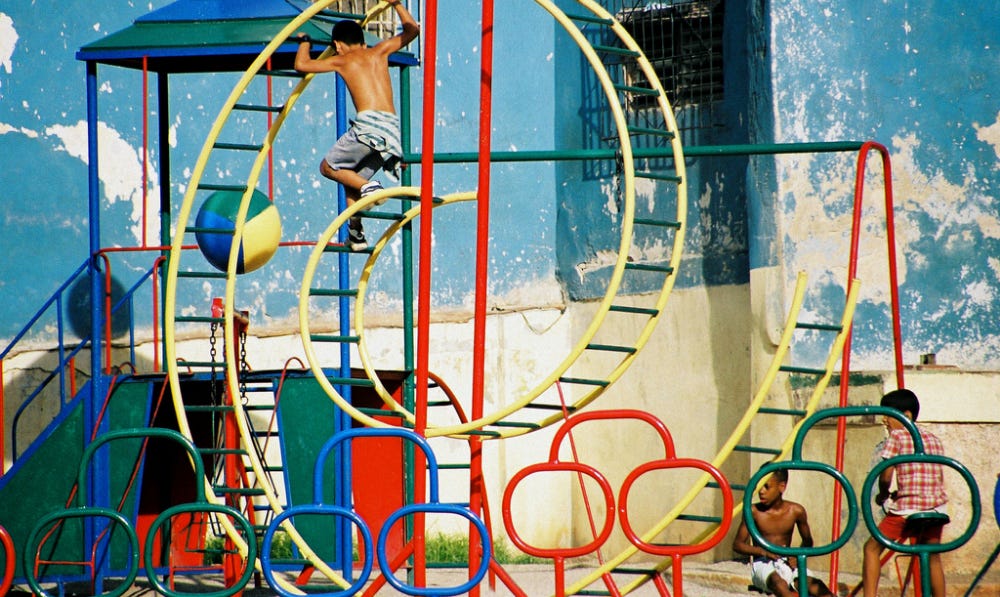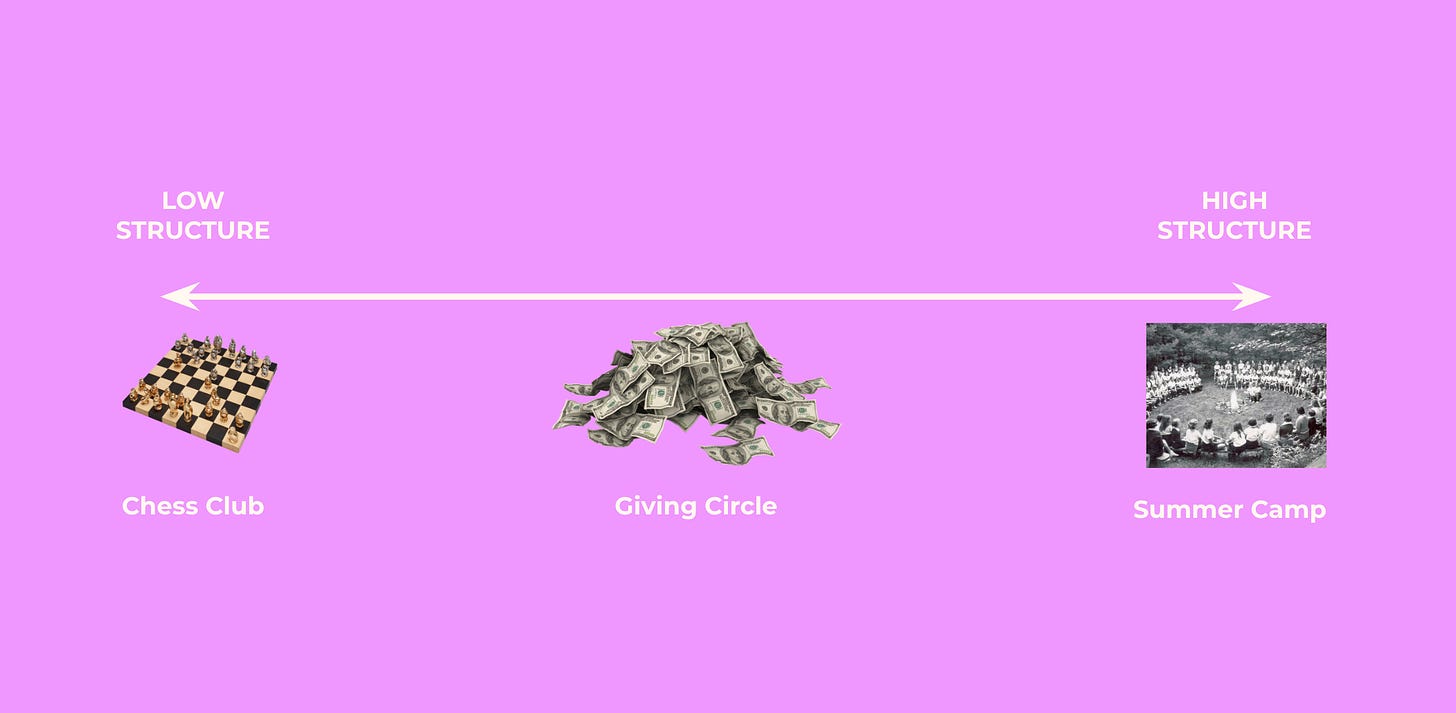More Structure ≠ More Community
The chess club to summer camp spectrum
Like any decent thirteen year old girl, I loved to make chili. I was newly vegetarian and wanted to learn how to feed myself beyond my cherished pile of Totino’s™ pizza rolls. The spice rack was there for me like a trunk of potions, each containing unfathomable flavor potential. I used them all as heavy-handedly as possible. I’d dump in cumin, garlic powder, oregano, cayenne, onion powder, and salt in the small bucketfuls I had seen on cooking shows – you know, portions usually reserved for batch sizes twenty times what I was making.
All to say: it tasted so weird. I think I could sometimes feel the grit of spice on my tongue, there was so much of it. But I didn’t care! I was high off the thrill of knowing there was more I could control beyond wiggling a salt shaker into the void.
This is just what happens when we learn the levers of creation. Something that used to feel like magic is suddenly revealed to have components. And these can be emphasized, dialed down, plucked from a back pocket like a safety pin, like sleight of hand, like a half cup of cumin. The power to shape outcome is nothing short of exhilarating.
In community building, I am a tween making chili again. It is the same exact sensation, the same thrill. To know it’s possible to change the feeling of a room with a good warm-up, or to smooth out the experience of a newcomer through a gradual staircase of participation. It is alluring as garlic powder.
The math goes something like this: if one lever could be used to create better conditions for community, and this lever could too, then what if I used all the levers at once? It is only logical, I think, that this would create the best community of all time.
Of course, it never works that way.
Consider the chess club, the giving circle, and the summer camp. All bring people together around a shared purpose, but they offer different levels of structure:
Chess Club – simply show up at the same cafe each week with your board (or maybe even this is provided), no real leadership beyond one host who will reliably be there, and maybe a few others to help hold tables, all promotion = word of mouth
Giving Circle – come together with peers around a cause you care about to pool resources. Maybe there’s a minimum donation amount, or a ritual of wine nights or potlucks or service days when deciding on where to give, which happens through nomination and a vote, and is organized regularly by a few core leaders; there might even be a website or documentation of your process
Summer Camp – every minute of the day is designed, there are clear hierarchies and roles to play, strong and even historied institutional identity and micro-identities, clear norms and expectations
But it’s totally possible someone might feel a deep sense of interconnectedness and belonging at the chess club while feeling their loneliest at camp. More structure – activities, roles, communications, norms – does not always link up with our sense of community.
Perhaps part of you is screaming inside at this suggestion, maybe after a mind-alteringly bad time at a community experience that had no agenda, no clarity, or no sense of who anyone was or what would happen afterwards. Let me tell you that you are not wrong!
I actually think it’s this wincing memory – the “we all know what a bad party/meeting/orientation feels like” – that propels us towards overstructure. Again, the fallacy: the best community experiences don’t exist because they have the most stuff.
You do not have to turn to more emails, more agreements, more gatherings, or more leadership as the only mechanisms for developing connectedness.
What is needed is just enough structure. How do we know what ‘just enough’ is? It depends on what it’s in service of; the conditions we hope to create together. Just as we might dial up seasoning based on what we hope our meal tastes like, it is something best added slowly, that gels as it cooks, benefits from tastetesters, and is supercharged by just the right addition at the right time.
This allows us to release the quest for the perfect structure and instead develop our sensitivity for what magic already lurks among us. Where are relationships already strong? Where is leadership and initiative already happening (i.e. afterparty planning, dish washing, spreadsheet making)? What surprises us, and how might this be fed?
Mostly this should give us relief; what’s standing between us and nurturing the communities we all hunger for isn’t exactly a specialized skillset, learning one more weird hack, or jamming in more stuff to do. It allows us to begin with the simplest question: what are the lightest structures needed to enable our relationships?
or simply click that ₊˚.⋆⁺₊💜₊˚.⋆⁺₊ at the top if you indeed liked it, we always appreciate that here at group hug hq!! love to you all
Appreciated this “training tool for productive discomfort”
Do more politics together over time worksheet that follows this great video
Black Food Rising celebrates Black-owned co-ops in Brooklyn
“I reframed my role as someone who was organizing recruiting but not responsible for its success.”
Barter, craigslist’s gen z niece where one could interview your family or make quick pickles for your dinner party
"We have a childcare center and a movie theater?!” the group text was firing about this
Group Work, a “compilation of quotes about collaboration” which made me feel like my beat is understood as several people sent it to me
Do you remember once upon a time when there were open doors? An invitation to the world
p.s. got an issue in your community? join the others who know to …







OK the subhead says "cheese club" and the article says "chess club" and I love this and actually want to join both, especially if I can be bad at the chess.
Hi! I'm a mega hug fan. I think I discovered you from one of Anna Howard's youtube videos. I just started a third-space co-op from my shared apartment. Anyways, love love love what you're doing! ✨